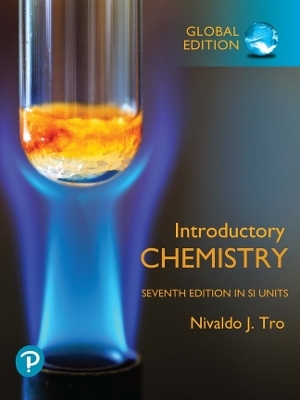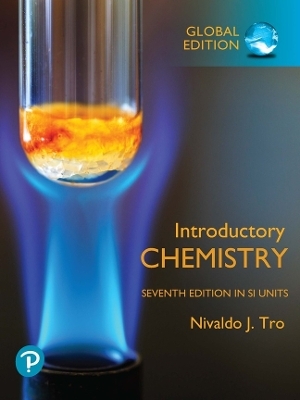
Metrology and Standardization of Nanotechnology – Protocols and Industrial Innovations
Wiley-VCH Verlag GmbH (Hersteller)
978-3-527-80030-8 (ISBN)
- Keine Verlagsinformationen verfügbar
- Artikel merken
For the promotion of global trading and the reduction of potential risks, the role of international standardization of nanotechnologies has become more and more important. This book gives an overview of the current status of nanotechnology including the importance of metrology and characterization at the nanoscale, international standardization of nanotechnology, and industrial innovation of nano-enabled products. First the field of nanometrology, nanomaterial standardization and nanomaterial innovation is introduced. Second, major concepts in analytical measurements are given in order to provide a basis for the reliable and reproducible characterization of nanomaterials. The role of standards organizations are presented and finally, an overview of risk management and the commercial impact of metrology and standardization for industrial innovations.
Elisabeth Mansfield is research chemist at the National Institute of Standards and Technology (NIST) in Boulder, Colorado, USA. She obtained her PhD in analytical chemistry from the University of Arizona in Tucson, USA. During her career at NIST, she received both the Bronze and Silver Medal of the Department of Commerce/NIST for extending thermogravimetric analysis to the microscale and for pioneering work on carbon nanotube purification and analysis. Elisabeth Mansfield is member of various standards committees, among them the ASTM committee on thermal analysis and the ISO committee on nanoparticles. Debra L. Kaiser is a Technical Program Director in the Material Measurement Laboratory at NIST in Gaithersburg, Maryland, USA. She obtained her ScD in Materials Science and Engineering from the Massachusetts Institute of Technology (MIT). She worked as a postdoctoral fellow and consultant at the IBM Research Center in Yorktown Heights, New York, before joining NIST. After a productive research and management career, she now holds the position of Technical Program Director of the NIST Nanotechnology Environment, Health, and Safety Program. She is vice-chairman of ASTM International Committee E56 on Nanotechnology. Daisuke Fujita is the Executive Vice President of the National Institute for Materials Science (NIMS) in Tsukuba, Japan. He obtained his MSc and PhD degrees in materials science and engineering from the University of Tokyo. Daisuke Fujita was senior researcher at the National Institute for Metals (NRIM) before joining NIMS as group leader in 2001. Subsequently he became Associate Director of the Nanomaterials Laboratory at NIMS, Managing Director of the Advanced Nano Characterization Center, Coordinating Director of the Key Nanotechnologies Division, and Director of the Advanced Key Technologies Division before assuming his current responsibilities Marcel Van de Voorde has 40 years' experience in European Research Organisations including CERN-Geneva, European Commission, with 10 years at the Max Planck Institute in Stuttgart, Germany. For many years, he was involved in research and research strategies, policy and management, especially in European research institutions. He holds a Professorship at the University of Technology in Delft, the Netherlands, as well as multiple visiting professorships in Europe and worldwide. He holds a doctor honoris causa and various honorary Professorships. He is senator of the European Academy for Sciences and Arts, in Salzburg and Fellow of the World Academy for Sciences. He is a Fellow of various scientific societies and has been decorated by the Belgian King. He has authored of multiple scientific and technical publications and co-edited multiple books in the field of nanoscience and nanotechnology.
Foreword Preface Introduction: An Overview of Nanotechnology and Nanomaterial Standardization and Opportunities and Challenges PART I. NANOTECHNOLOGY BASICS: DEFINITIONS, SYNTHESIS, AND PROPERTIES Nanotechnology Definitions at ISO and ASTM International: Origins, Usage, and Relationship to Nomenclature and Regulatory and Metrology Activities Engineered Nanomaterials: Discussion of the Major Categories of Nanomaterials Nanomaterials Synthesis Methods Physicochemical Properties of Engineered Nanomaterials Biological Properties of Engineered Nanomaterials PART II. METROLOGY FOR ENGINEERED NANOMATERIALS Characterization of Nanomaterials Principal Metrics and Instrumentation for Characterization of Engineered Nanomaterials Analytical Measurements of Nanoparticles in Challenging and Complex Environments Metrology for the Dimensional Parameter Study of Nanoparticles Analytical Nanoscopic Techniques: Nanoscale Properties Tribological Testing and Standardization at the Micro- and Nanoscale Stochastic Aspects of Sizing Nanoparticles PART III. NANOTECHNOLOGY STANDARS ISO Technical Committee 229 Nanotechnologies Standards from ASTM International Technical Committee E56 on Nanotechnology International Electrochemical Commission. Nanotechnology Standards Standardization of Nanomaterials: Methods and Protocols Nanomaterial Recommendation from the International Union of Pure and Applied Chemistry Reference Nanomaterials to Improve the Reliability of Nanoscale Measurements Versailles Project on Advanced Materials and Standards (VAMAS) and its Role in Nanotechnology Standardization PART IV. RISK-RELATED ASPECTS OF ENGINEERED NANOMATERIALS Categorization of Engineered Nanomaterials for Regulatory Decision-Making Nano-Exposure Science: How does Exposure to Engineered Nanomaterials Happen? Nanotoxicology: Role of Physical and Chemical Characterization and Related In Vitro, In Vivo, and In Silico Methods Minimizing Risk: An Overview of Risk Assessment and Risk Management of Nanomaterials PART V. NANOTECHNOLOGY-BASED PRODUCTS, APPLICATIONS, AND INDUSTRY Nanoenabled Products: Categories, Manufacture, and Applications Application of Nanomaterials to Industry: How are Nanomaterials Used and What Drives Future Applications? Ethics and Nanomaterials Industrial Production Nanomaterials for Energy Applications The Importance of Metrology and Standardization of Nanomaterials for Food Industry and Regulatory Authorities in Europe Magnetic Properties and Applications of Engineered Nanomaterials Nanomaterials in Textiles Index
| Verlagsort | Weinheim |
|---|---|
| Sprache | englisch |
| Maße | 244 x 170 mm |
| Gewicht | 666 g |
| Themenwelt | Naturwissenschaften ► Chemie |
| Technik ► Elektrotechnik / Energietechnik | |
| Technik ► Maschinenbau | |
| ISBN-10 | 3-527-80030-1 / 3527800301 |
| ISBN-13 | 978-3-527-80030-8 / 9783527800308 |
| Zustand | Neuware |
| Informationen gemäß Produktsicherheitsverordnung (GPSR) | |
| Haben Sie eine Frage zum Produkt? |
aus dem Bereich

